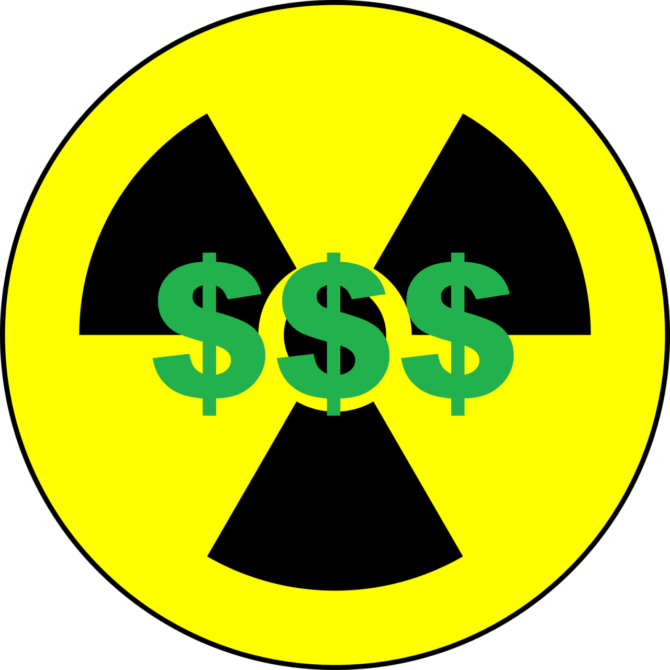
The White House wants $65 million in fiscal 2019 for the Department of Energy to start work on the low-yield ballistic-missile warhead called for in the latest Nuclear Posture Review: a weapon Congress must authorize before the agency can start building it.
The Donald Trump administration made the funding request official on April 13 in proposed amendments to the spending request it released in March for the budget year starting Oct. 1.
“At the time the FY 2019 Budget was transmitted to the Congress, the details of the NPR [Nuclear Posture Review] were still being defined, and were not ready for inclusion in the FY 2019 Budget,” Mick Mulvaney, director of the White House Office of Management and Budget, wrote in a budget amendment package dated Friday. [full amendments package on whitehouse.gov].
As expected, DOE’s semiautonomous National Nuclear Security Administration (NNSA) will create the new low-yield warhead by modifying some existing W76 warheads currently used by the Trident II D-5 missiles carried aboard Ohio-class submarines.
The NNSA is in the middle of a separate life-extension program for the W76 warhead and wants to use the assembly lines built for that work to do the low-yield modification, Mulvaney wrote in his letter to House Speaker Paul Ryan (R-Wis.).
Mulvaney’s letter did not say exactly how the NNSA would spend the $65 million.
The agency has previously said the final product of the modification would be a W76 warhead with only a primary detonation stage. The weapon now in service has a secondary stage that could be removed and replaced with ballast. Removing the secondary stage would make the weapon less destructive: by one estimate, about a third as powerful as the “Little Boy” bomb the U.S. dropped on Hiroshima at the end of World War II.
Mulvaney also did not disclose the exact bill-payer for the low-yield work in 2019. Funding for the W76 modification would come out of the NNSA’s Defense Programs budget, the budget director said, without saying which program or programs would be cut for the warhead’s sake.
The Pentagon, meanwhile, has requested a little over $20 million for 2019 to begin its share of work on the low-yield version of the W76 warhead. That brings the total 2019 ask for the program, including DOE and the Defense Department money, to around $85 million. For scale, that is about 40 percent of what DOE alone is spending in fiscal 2018 on the W76 life-extension program as a whole. The W76 life-extension began in 2000 and is projected to cost roughly X through fiscal-year 2019.
The NNSA cannot begin design work on the low-yield warhead without congressional authorization either as part of a budget bill or in separate legislation such as the annual National Defense Authorization Act. Like the annual budget bills — which often are not approved until after the start of the fiscal year for which they appropriate funding — the defense authorization act is generally considered must-pass legislation.
However, the Pentagon can begin its work.
In an April 11 hearing of the Senate Armed Services strategic forces subcommittee, Vice Adm. Terry Benedict, Navy director of Strategic Systems Programs, said the Defense Department would use the $20 million or so it requested for the low-yield W76 in 2019 “to ensure that all my documentation is complete and consistent with this type of a weapon, and to do the work at my strategic weapons facilities, [and] to do the load out change between the current configuration on the submarines and this new configuration.”
Democrats in Congress have bucked at the Trump administration’s desire to build low-yield warheads. These include Rep. Adam Smith (D-Wash.), ranking Democrat on the House Armed Services Committee; Sen. Dianne Feinstein (D-Calif.), ranking member of the Senate Appropriations panel that controls the NNSA’s budget; and Sen. Elizabeth Warren (D-Mass.), a member of the Senate Armed Services Committee.
All of these lawmakers have wondered whether low-yield, missile-launched warheads are necessary, given the low-yield gravity bomb already in the arsenal, and whether such weapons might create more strategic uncertainty than they prevent. Along with the low-yield ballistic missile warhead mandate, the Nuclear Posture Review directs the NNSA and the Pentagon to study a low-yield option for a future sea-launched cruise missile.